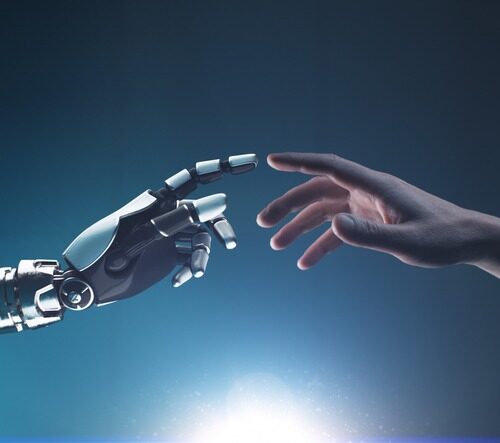The workplace is changing rapidly, and one of the most significant drivers of this change is automation. From factory floors to office cubicles, machines are taking over many tasks humans once did. While this shift has undoubtedly brought benefits in terms of efficiency and productivity, it has also raised concerns about the future of work. Will there be enough jobs for humans in an automated world? And what skills will be most valuable in this new landscape?
One thing that’s clear is that human creativity will remain essential, even as machines become increasingly sophisticated. While automation can handle routine tasks and process large amounts of data, it cannot replicate the unique perspective and problem-solving abilities of the human mind. Creativity will remain a critical asset in the workplace of the future.
In this article, we’ll explore the rise of automation and its impact on the workforce. We’ll also discuss the value of human creativity and its role in the future of work. Finally, we’ll offer some tips and strategies for companies that want to foster creativity in their workforce and stay ahead of the curve in this rapidly changing landscape.
The Rise of Automation
Automation is not a new phenomenon, but recent technological advances have made it more widespread than ever before. From self-driving cars to chatbots, machines are taking over an increasing number of tasks that were once done by humans. According to a recent report, up to 375 million workers (about 14% of the global workforce) may need to switch occupations or acquire new skills by 2030 due to automation.
Some industries are more likely to be impacted than others. For example, manufacturing has already seen significant job losses due to automation, and service industries like retail and hospitality are also at risk. Even traditionally white-collar jobs like accounting and legal services are not immune to automation, as machines become better at analyzing data and processing information.
While automation can bring benefits in increased efficiency and lower costs, it also has drawbacks. One of the main concerns is that it will lead to job losses, particularly in industries where routine tasks are being automated. There are also concerns about the impact on the quality of jobs that remain, as many of the tasks that cannot be automated are low-paying and low-skilled.
Despite these concerns, there are also reasons to be optimistic about the future of work. As automation takes over routine tasks, there will be a growing need for workers who can think creatively and develop innovative solutions to complex problems. This is where human creativity comes in.
The Value of Human Creativity
One of the main advantages of human creativity is that it allows us to do things that machines cannot. While machines are great at processing large amounts of data and following set rules, they cannot think outside the box or come up with truly novel ideas.
Creativity is also essential for innovation. To stay competitive, companies must constantly come up with new products, services, and ways of doing things. This requires the ability to think creatively and the willingness to take risks and try new things.
- 90% of business leaders believe that the skills needed in the future will differ from those required today (source: Deloitte).
Another benefit of human creativity is that it allows us to connect with other people on an emotional level. Machines may be able to process information and provide answers, but they cannot replicate the empathy and understanding that comes from human interaction. This is particularly important in industries like healthcare and education, where human connection is essential to the work being done.
“The future of work is not about replacing humans with machines; it’s about augmenting human capabilities with technology.” – Satya Nadella, CEO of Microsoft.
In an increasingly automated world, the value of human creativity will only continue to grow. As machines take over routine tasks, workers who can think creatively and come up with innovative solutions will be more valuable than ever. This means that companies will need to invest in fostering creativity in their workforce and finding ways to tap into their employees’ unique perspectives and problem-solving abilities.
The Future of Work
As automation continues to transform industries, the workforce is likely to change in significant ways. Some jobs will become obsolete, while new roles will emerge due to automation.
For example, there will be an increasing demand for workers who can design and program machines, as well as those who can manage and maintain them. There will also be a growing need for workers who can analyse and use data to make informed decisions. However, even in these roles, creativity will remain essential.
One area where creativity plays a critical role is problem-solving. As machines take over routine tasks, workers will be free to focus on more complex problems that require a human touch. This could include customer service, product design, and strategic planning.
- Creativity will be one of the top three most important skills for workers in 2025 (source: World Economic Forum).
To succeed in this new landscape, workers must be adaptable and willing to learn new skills. They will also need to be comfortable with ambiguity and able to think creatively about complex problems.
For companies, this means investing in their workforce and providing opportunities for training and development. It also means creating a culture that values creativity and encourages collaboration and innovation.
The Role of Market Research
Market research can play a valuable role in helping companies stay ahead of the curve within the changing work landscape. By conducting research and gathering insights about the skills and attributes that will be most valuable in the future, companies can better prepare their workforce and position themselves for success.
Market research can be beneficial in identifying the skills and attributes that will be most in demand in the future. For example, a company might conduct research to identify the skills required for jobs that are likely to emerge due to automation. They might also gather insights about the skills that will be most valuable in industries that are likely to be less impacted by automation.
Market research can also help companies better understand the needs and preferences of their workforce. For example, a company might conduct research to gather insights about what motivates employees and what types of work environments are most conducive to creativity and innovation.
Finally, market research can help companies identify opportunities for innovation and growth. By gathering insights about changing customer needs and preferences, companies can develop new products and services that meet those needs and stay ahead of the competition.
- Investment in retraining and reskilling could generate up to $11.5 trillion in global economic activity by 2028 (source: Oxford Economics).
To succeed in the future of work, companies must be proactive and adaptive. By leveraging the insights provided by market research, they can position themselves for success and ensure that their workforce is equipped with the skills and attributes needed to thrive in an increasingly automated world.
Fostering Creativity in the Workplace
Companies must foster creativity in their workforce to stay competitive in an increasingly automated world. Here are some tips and strategies for doing so:
- Encourage Collaboration: Collaboration is essential for creativity. Encourage your employees to work together and share ideas. Create opportunities for cross-functional teams to work on projects together.
- Provide Training and Development: Invest in your workforce by providing opportunities for training and development. This could include things like workshops, courses, and coaching.
- Create a Culture of Innovation: Foster a culture that values innovation and encourages employees to take risks and try new things. Celebrate successes and learn from failures.
- Embrace Diversity: A diverse workforce brings diverse perspectives and ideas. Embrace diversity and create a culture that values inclusivity.
- Provide Time and Space for Creativity: Creativity requires time and space to flourish. Provide your employees with the time and resources they need to be creative.
Industries Where Human Creativity is Critical
While healthcare and education are two industries where human connection is essential, there are many other industries where creativity plays a critical role. Here are some examples:
- Advertising: Advertising is all about creativity. Companies need to be able to create compelling messages and visuals that capture the attention of their target audience. This requires creative thinking and the ability to anticipate trends and stay ahead of the competition.
- Design: Designers create everything from product packaging to digital interfaces. To be successful in this field, designers need to be able to think creatively and come up with innovative solutions to design problems.
- The Arts: From visual art to music to theatre, the arts are all about human creativity. Whether it’s composing a new piece of music or creating a new painting, artists rely on their creativity to express themselves and connect with their audience.
- Fashion: The fashion industry is all about creativity and innovation. From designing new clothing lines to creating eye-catching window displays, fashion professionals need to be able to think outside the box and come up with new and exciting ideas.
Preparing Students for the Jobs of the Future
With automation rapidly transforming the workforce, it’s essential to consider how education can be adapted to prepare students for future jobs. Here are some ways that education can help prepare students for the changing landscape of work:
- Teaching Problem-Solving Skills: Problem-solving is a critical skill in an automated world. Workers will need to be able to analyse complex problems and come up with creative solutions. Schools can teach problem-solving skills by allowing students to work on real-world problems and encouraging them to collaborate and think creatively.
- Fostering Critical Thinking: Critical thinking is another vital skill for the future of work. Workers must be able to analyse data and information and make informed decisions. Schools can foster critical thinking by teaching students how to evaluate information and arguments and encouraging them to think critically about the world around them.
- Encouraging Creativity: As discussed, human creativity will be a critical asset in an automated world. Schools can encourage creativity by providing students with opportunities to express themselves through art, music, and writing and by encouraging them to think outside the box and develop innovative solutions to problems.
- Teaching Digital Skills: As automation becomes more widespread, digital skills will become increasingly important. Schools can prepare students for the future of work by teaching them how to use technology effectively and adapt to new digital tools and platforms.
The Impact of Automation on Workers
While automation has many benefits in terms of increased efficiency and productivity, it also has the potential to impact workers negatively. Here are some of the potential negative impacts of automation on workers:
- Job Loss: The most apparent impact of automation is the potential for job loss. As machines take over routine tasks, workers in these fields may find themselves out of work. This can be particularly difficult for workers lacking the skills or resources to transition to new roles.
- Reduced Job Security: Even workers not directly impacted by automation may find themselves at risk of reduced job security. As companies increasingly rely on automation to cut costs and increase efficiency, workers may face layoffs or reduced hours.
- Lower Wages: In some cases, automation can lead to lower wages for workers. This may happen if machines can perform tasks more quickly and efficiently than humans, decreasing the value of human labour.
- Need for Retraining: For workers displaced by automation, retraining will be essential. However, it may be difficult for some workers to access the resources and support needed to learn new skills and transition to new roles.
As automation continues to transform the workforce, it will be necessary for companies and policymakers to consider how to mitigate the potential negative impacts on workers. This could include investing in programs to retrain displaced workers, providing job security and fair wages, and supporting workers as they adapt to the changing work landscape.
- 30% of workers are at high risk of being displaced by automation by the mid-2030s (source: PwC).
Overall, while automation has many benefits, it’s important to remember that it also has the potential to impact workers significantly. By taking steps to mitigate these impacts, we can ensure that the benefits of automation are shared more equitably and that workers can thrive in the changing work landscape.
In the face of automation, getting caught up in concerns about job loss and economic disruption is easy. However, it’s important to remember that automation also brings benefits in terms of increased efficiency and productivity. The key is to find the right balance between automation and human creativity.
“In an increasingly automated world, creativity is the new literacy.” – Gerard Adams, entrepreneur and investor.
As we’ve seen in this article, human creativity will remain essential in the future of work. While machines are great at routine tasks and processing large amounts of data, they cannot replicate the unique perspective and problem-solving abilities of the human mind. Companies that foster creativity in their workforce will be better positioned to thrive in the changing work landscape.
In addition to fostering creativity, companies must consider the impact of automation on workers. While automation can bring many benefits, it also has the potential to negatively impact workers through job loss, reduced job security, and lower wages. As such, companies and policymakers should consider how to mitigate these impacts and ensure that workers can thrive in an increasingly automated world.
“Automation can liberate human beings from the burden of repetitive work and free us to pursue more creative and fulfilling activities.” – Klaus Schwab, Founder and Executive Chairman of the World Economic Forum.
Market research can play an important role in helping companies stay ahead of the curve and identify the skills and attributes that will be most valuable in the future. By leveraging the insights provided by market research, companies can position themselves for success and ensure that their workforce is equipped with the skills and attributes needed to thrive in an increasingly automated world.
Preparing students for the jobs of the future will require a combination of traditional academic skills and newer digital and creative skills. By adapting their curriculum and teaching methods, schools can help ensure that students have the skills and attributes needed to succeed in an increasingly automated world.
The future of work is likely to be characterised by a blend of automation and human creativity. By balancing these two forces, companies can position themselves for success and ensure they can thrive in the changing work landscape. However, companies and policymakers need to consider the impact of automation on workers and for schools to prepare students for the jobs of the future. By taking a holistic approach, we can ensure that the benefits of automation are shared more equitably and that workers and students can thrive in the changing landscape of work.
Get regular insights
Keep up to date with the latest insights from our research as well as all our company news in our free monthly newsletter.





 Senior Marketing Executive
Senior Marketing Executive Sales & Marketing
Sales & Marketing General Manager PR -Internal Communications & Government Affairs
General Manager PR -Internal Communications & Government Affairs Vital Strategies
Vital Strategies
 Customer Intelligence Director
Customer Intelligence Director